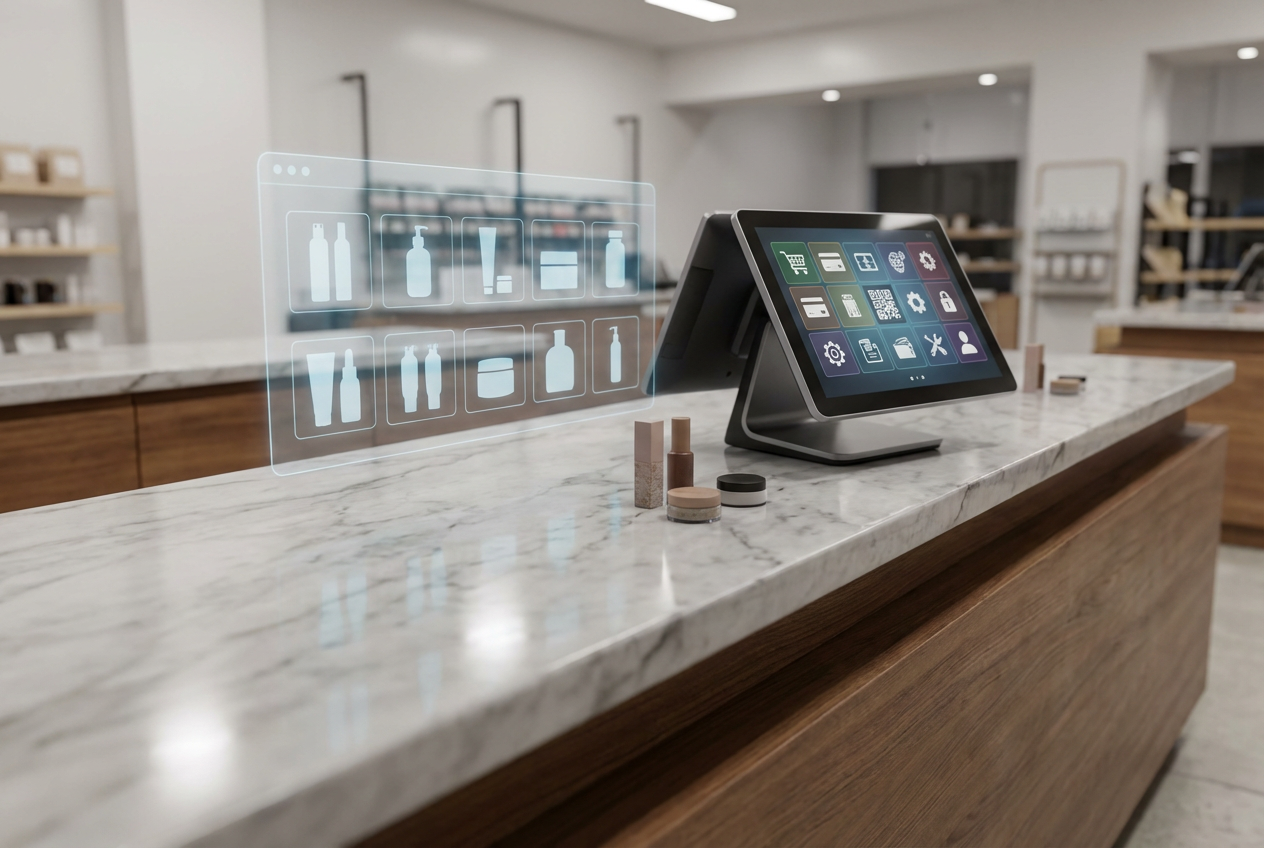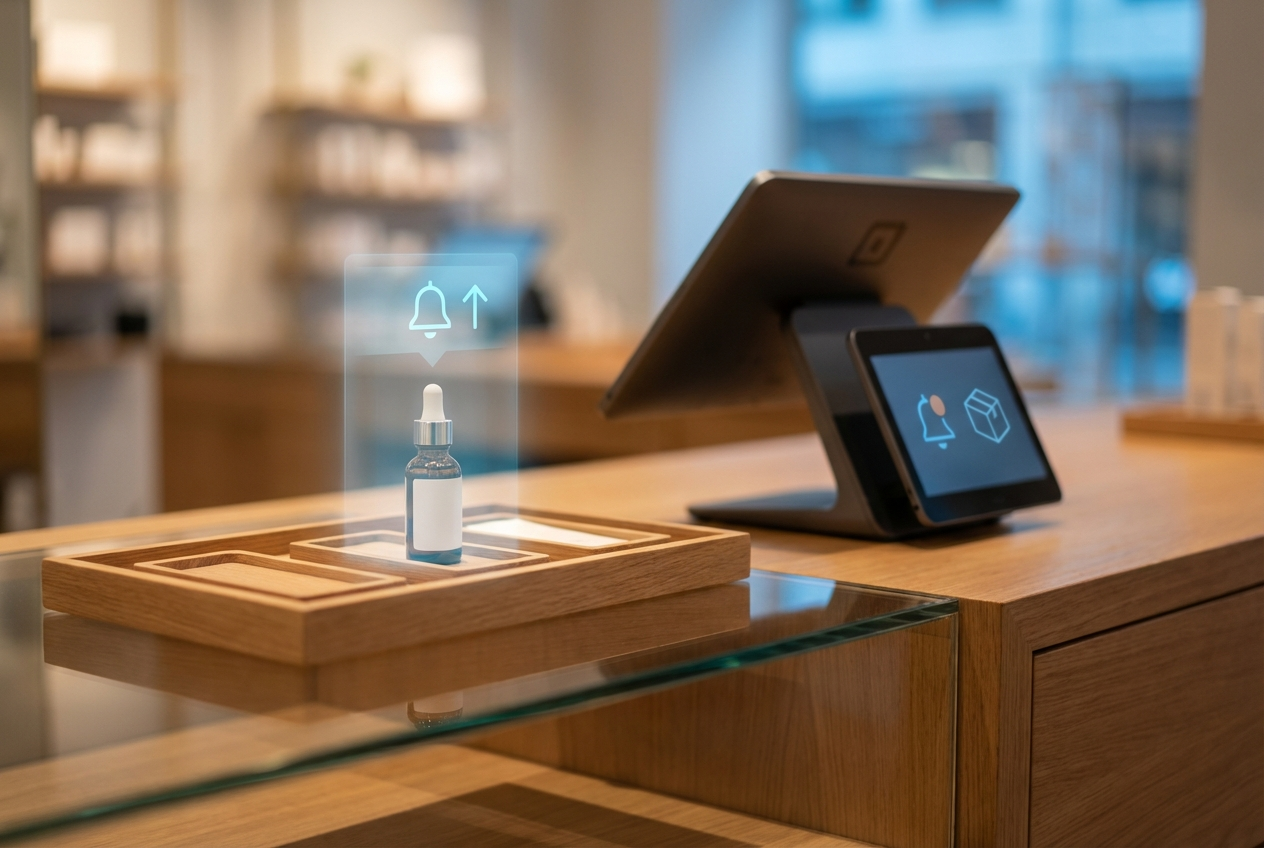The age of generic campaigns is behind us. Today’s ecommerce landscape demands relevance, timing, and responsiveness, across every customer interaction. This article from ConnectPOS outlines practical insights and recommended actions for businesses aiming to apply ecommerce marketing automation across marketing touchpoints. From real-time emails to data-driven segmentation, each strategy discussed here is designed to help retailers move beyond guesswork and work toward marketing that scales with intent.
Highlights
- Automation drives consistent, personalized communication across channels, helping businesses convert more customers and maintain engagement without increasing workload.
- Real customer behavior guides everything. Abandoned cart recovery, welcome flows tailored to browsing patterns, segmented SMS, and post-purchase emails work together to build stronger retention and increase conversions.
Ecommerce Marketing Automation and Its Benefits
Global ecommerce sales are expected to hit $6.86 trillion in 2025, rising to $8 trillion by 2027. With a CAGR of 7.8%, digital retail is expanding at more than twice the pace of physical stores. This signals not just a shift in buying habits but a demand for marketing systems that can scale at the same rate.

E-commerce marketing automation plays a key role in this growth. It supports consistent, data-driven interactions—from behavior-based emails to personalized promotions—without manual effort. As online competition intensifies, businesses that apply automation across the full customer journey are more equipped to sustain engagement and drive long-term value.
Benefits:
- Creates more chances for sales: Triggers like abandoned cart emails, low-stock alerts, or tailored product suggestions can reconnect with shoppers and encourage action.
- Relieves marketing teams from repetitive work: Systems handle execution, giving marketers time to improve messaging, test ideas, and build stronger campaign logic.
- Supports sharper audience targeting: Communication adjusts to age, behavior, engagement level, or shopping patterns. Each group receives messages aligned with its habits or preferences.
- Keeps customers engaged through every phase: Follow-ups, reminders, and personalized touchpoints maintain attention during and after the buying process.
- Refines ad campaigns and message delivery: Marketing platforms group users into precise segments, helping paid media reach audiences based on specific behaviors or characteristics.
- Strengthens post-purchase interaction: Follow-up emails asking for feedback, offering related items, or helping with next steps help extend the relationship beyond the initial order.
Common Types of Ecommerce Marketing Automation
Ecommerce marketing automation relies on systems that respond to customer behavior without requiring constant manual input. Each type focuses on a specific stage of interaction, allowing businesses to maintain relevance across touchpoints.
- Email Triggers Based on User Activity: Email flows are structured to match what a customer does on-site. Visiting a product page, signing up for a list, or clicking on a past promotion can each prompt a tailored sequence. These campaigns speak directly to interest, building context across multiple messages over time.
- Cart Recovery Messages: Leaving items in a shopping cart without checking out is one of the strongest indicators of purchase intent. Automated messages sent shortly after abandonment remind the customer of what they left behind and can include images, pricing, or low-stock warnings. These reminders often bring users back without further marketing spend.
- Automated Loyalty Updates: Customers enrolled in loyalty programs receive communications based on their progress. Updates about point balances, exclusive access, or limited windows to redeem benefits are delivered through predefined rules. These messages support recurring engagement and help maintain top-of-mind presence.
- Onsite Experience Adjustments: Website content adjusts depending on visitor behavior. A returning customer might see products they browsed previously, while someone new could be shown curated collections. These changes happen based on data already collected, no need to prompt action manually.
- Data Connection Between Systems: Automated workflows can also keep customer records in sync. Purchase history, contact details, and engagement metrics flow between platforms like CRM or ERP. This reduces manual data entry and helps maintain consistency across sales, marketing, and service teams.
Effective Ecommerce Marketing Automation Strategies
Which automation strategies will bring the most value really comes down to what your business needs right now. Still, if you’re not already using automation for at least five of the methods listed below, it may be time to explore some tools.
Even rolling out a handful of these can make everyday marketing work smoother and more manageable than expected. You might be surprised at how quickly things start falling into place once the right systems are in motion, especially when those systems are built around ecommerce marketing automation.
Abandoned Cart Email Campaigns
The average cart abandonment rate across online stores currently stands at 70.19%, according to Baymard Institute. Out of 1,000 potential orders, around 700 are left uncompleted at checkout. Rather than being a traffic issue, this represents a clear gap in conversion.
Setting up automated cart recovery sequences allows brands to recapture missed revenue. Klaviyo reports that these flows outperform all other types of marketing emails in both open rates and return-per-recipient.
Keeping the message concise and limited to two or three emails per cart avoids overwhelming the user. Monitoring key metrics helps refine each campaign over time.
Welcome Email Nurtures
A welcome series helps form a customer’s early perception of your brand. It sets the tone before any purchase happens. While these shoppers may not be ready to buy yet, unlike someone who abandons a cart, they’re still paying attention. This is your chance to guide them, slowly and deliberately, toward a decision using ecommerce marketing automation to deliver messages that reflect intent and timing.
►►► Optimal solution set for businesses: Multi store POS, Next-gen POS, Inventory Management Software (MSI), Self Service, Automation, Backorders
How you collect their email address plays a big role in how you engage them later. Maybe you’re offering a discount, entry into a rewards program, or simply asking them to join your newsletter. Each approach attracts different types of users and gives you different signals. Where the signup happens matters too. If someone opts in while viewing T-shirts, sending an email about sunglasses right away risks losing relevance.
To keep their interest, align your messages with their behavior. Recommend items similar to what they already explored or highlight popular picks in the same category. A small, thoughtful sequence can go further than a loud, generic campaign. It shows the brand is paying attention and that creates a reason to stay engaged.
Follow-up Emails
Customers may leave without adding products to their carts, but that behavior still provides a signal. Messages sent after browsing can rekindle intent, especially when personalized with stock updates or reminders based on previous views.
On the other end of the funnel, confirmation emails can serve more than transactional purposes. They can offer shipment tracking, usage tips, and curated product suggestions, extending the post-purchase experience and maintaining engagement beyond checkout through ecommerce marketing automation workflows.
Customer Loyalty Programs
Loyalty programs can play a major role in how ecommerce brands build long-term engagement. At the start, the goal is to gather customer details such as name, email, birthday, by offering something worthwhile in return. A discount code at sign-up often does the trick, creating a low-friction entry point into deeper brand interaction.
Once enrolled, ecommerce marketing automation can trigger timely communications through SMS and email. These updates may include reward balances, product announcements, or back-in-stock alerts, all tailored to previous behavior.
Beyond first purchases, loyalty programs help brands reconnect with returning customers. Automated flows maintain consistent touchpoints and remind shoppers why they came back in the first place.
Birthday Offers
Birthdays present a built-in reason to reconnect. When this information is already available, automated systems can schedule personalized offers just before the date. Even small gestures, like discounts or gifts, can influence purchasing decisions.
What matters is timing and clarity. Flashy designs are less important than a message that lands at the right moment and feels relevant to the individual. This simple tactic fits neatly into loyalty workflows and requires little manual involvement once it’s in place.
Surveys, Feedback Requests, and Reviews
The experience after a purchase carries just as much weight as what happens before it. Fast delivery, flexible return policies, and thoughtful packaging often shape how a customer remembers the brand. These touchpoints, when handled well, encourage people to return without needing to be convinced. Ecommerce marketing automation can help maintain this momentum through structured and timely follow-ups.
This momentum can continue through automated follow-up emails. These messages serve different purposes. One approach is to recommend items based on the buyer’s previous activity, such as similar products or ones that other customers often choose next. Since the brand already holds real-time data on browsing and purchase behavior, it makes sense to act on that insight through timely suggestions.
Asking for feedback is another practical step. A short survey sent soon after delivery can provide insight into pain points like checkout flow, product descriptions, or how easy it was to find information. This kind of feedback loop helps teams improve what matters most to the buyer.
Requesting product reviews should be part of the process too. Around 98% of shoppers read reviews before deciding what to buy, which makes them one of the strongest tools on any product page. To get more of them, consider sending a review request a few days after the item arrives, once the customer has had a chance to use it. If response rates are low, a small incentive or a QR code in the package might help encourage more participation without changing the nature of the feedback.
Chatbots for Customer Support
Live chat coverage becomes difficult to maintain at scale. Automating initial responses through chatbots allows customers to access help with product searches, recommendations, and order tracking without long waits.
These bots handle routine tasks, leaving human agents to focus on complex issues. Programming them to reflect the brand’s tone ensures consistency. As they learn from interactions, they respond more naturally, supporting better outcomes without added overhead.
Automated SMS Campaigns
As advertising noise increases across channels, personal relevance becomes harder to achieve. Ecommerce marketing automation allows brands to filter through that noise by targeting based on real interests and behaviors. SMS campaigns stand out because they reach customers directly, often within seconds, creating a rare window for engagement.
These messages work best when used sparingly and strategically. One or two SMS sends per month is often enough to keep the brand top-of-mind without overwhelming the recipient. Ideal use cases include low-inventory alerts, price changes, or personalized product launches, each grounded in data from previous actions.
Instead of treating SMS like a shortened email, treat it more like a tap on the shoulder. These short bursts of communication, when timed well, feel helpful rather than intrusive. Over time, they can support higher response rates and make repeat interactions feel more natural.
Optimizing Campaign Messaging
Data from past campaigns reveals what resonates. Reviewing open rates, clicks, and time of engagement helps teams adjust subject lines, visuals, or offers in future sends.
Automation doesn’t just deliver messages. It frees time to improve content quality. As campaigns evolve, messages shift from broad blasts to tailored communication based on real behavior. This shift moves marketing from repetition to refinement.
How ConnectPOS Enhances Your Ecommerce Marketing Automation
ConnectPOS supports ecommerce businesses by connecting online storefronts and physical locations under one system. This structure gives teams consistent access to customer, order, and inventory data across channels. As a result, campaigns and messaging can respond to actual activity in near real-time.
When integrated with platforms such as Magento POS, Shopify POS, WooCommerce POS, and BigCommerce POS, ConnectPOS gives marketers the ability to build automation sequences on top of live operational data. Timing and content become more accurate since messaging reflects what’s happening at the point of sale.
How ConnectPOS Supports Ecommerce Marketing Automation
- Inventory updates in real time: Stock levels across locations are updated the moment a transaction occurs. Email flows tied to back-in-stock alerts, low inventory notices, or limited-time deals stay accurate because they draw directly from current data.
- Customer profiles built on transactions: Each purchase, return, or loyalty action becomes part of a customer profile. These details can be pulled into welcome sequences, repeat buyer campaigns, or behavioral targeting without relying on guesswork.
- Promotions and loyalty logic at checkout: ConnectPOS supports real-time coupon application, point collection, and discount programs. The system passes this promotional history into marketing tools, helping brands send messages that match each customer’s activity.
- Triggered messages based on store behavior: Once a buyer hits a loyalty milestone, receives a birthday reward, or redeems a coupon, a tailored message can go out immediately. Timing aligns with behavior rather than scheduled blasts.
- Data-backed decisions from real sales trends: Marketers can evaluate what’s working by reviewing dashboards inside ConnectPOS. Campaign performance becomes easier to track since the same system records both engagement and conversion data.
- Unified pricing and promotion across touchpoints: Product information, pricing, and discounts are reflected across ecommerce sites, retail stores, and receipts. Customers receive consistent messages no matter where they shop or how they check out.
ConnectPOS brings order-level insight to marketing automation. Email, SMS, loyalty, and on-site messaging all become more aligned with what customers are actually doing, not just what businesses expect them to do.
FAQs: Ecommerce Marketing Automation
What does ecommerce marketing automation involve?
It involves using connected systems to trigger personalized marketing actions based on customer behavior. Instead of sending mass emails or promotions manually, businesses can schedule and trigger relevant messages, such as cart recovery emails, product restock alerts, or loyalty rewards, based on real-time data.
Why should ecommerce businesses use marketing automation?
Automation supports consistency across customer touchpoints and helps teams act on data quickly. It allows brands to re-engage shoppers, drive repeat purchases, and adjust messaging based on actual interactions without relying on manual inputs for every campaign.
Which marketing tasks are most commonly automated in ecommerce?
Tasks often include abandoned cart reminders, welcome email series, birthday promotions, back-in-stock alerts, product recommendations, feedback requests, loyalty updates, and re-engagement emails. These flows respond to behavior like browsing, purchasing, or inactivity.
Conclusion
Ecommerce marketing automation is no longer a complexity, it’s an operational foundation. Every workflow built, every segment refined, and every message sent with purpose contributes to long-term performance. Sharpening post-purchase communication or creating intent-driven journeys both rely on consistency far more than tool complexity.
For retailers ready to align marketing with real-time customer behavior, now is the time to take the next step. ConnectPOS collaborates with forward-thinking e-commerce teams to implement automation, backed by data and grounded in business logic. Reach out to us to know how your store can run smarter.
►►► Optimal solution set for businesses: Shopify POS, Magento POS, BigCommerce POS, WooCommerce POS, NetSuite POS, E-Commerce POS



